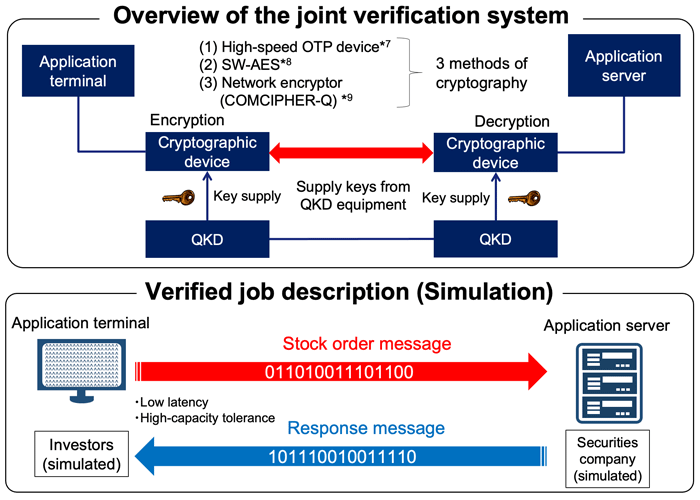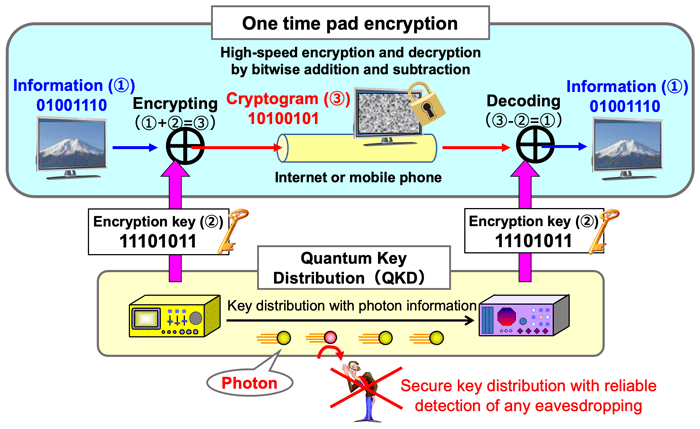Background
Outline of the joint verification test


FIX
Cross-ministerial Strategic Innovation Promotion Program (SIP)
Quantum cryptographic communication

Quantum key distribution system
Tokyo QKD Network
One time pad system
High-speed OTP device
SW-AES
Network encryptor(COMCIPHER-Q)
Nomura Holdings
Group Corporate Communications Dept.
Tel: +81 3 3278 0591
National Institute of Information and Communications Technology
Advanced ICT Research Institute
Koganei Frontier Research Center
Quantum ICT Laboratory
 nict.go.jp
nict.go.jp
Toshiba Corpration
Corporate Research & Development Center
 rdc.toshiba.co.jp
rdc.toshiba.co.jp
NEC Corporation
Technology Synergy Creation Division
 tsc.jp.nec.com
tsc.jp.nec.comNomura Holdings
Group Corporate Communications Dept.
Tel: +81 3 3278 0591
National Institute of Information and Communications Technology
Public Relations Department
Press Office
 nict.go.jp
nict.go.jp
Toshiba Corporation
Media Relations Office
Tel: +81 3 3457 2100
 toshiba.co.jp
toshiba.co.jp
NEC Corporation
Corporate Communications Division
 nec.com
nec.com